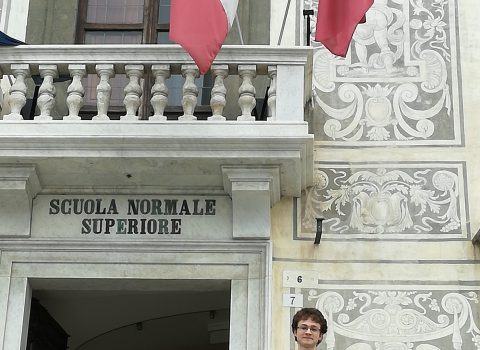FBK was awarded one of the “Digital Humanities” prizes for humanities computing
The “PAGANS” software came in first in the “Best use of DH for leisure” category, the best use of Digital Humanities for entertainment.
But what are the “Digital Humanities Awards”? They are international recognitions, divided by categories, destined to research projects in Humanities computing, a study field that arises from the merging of humanities with informatics. The aim of these prizes, which are awarded each year and do not provide for monetary prizes, is that of raising awareness and informing the widest possible audience on resources developed in this particular field of research.
PAGANS (acronym for Playful Art: a Game oN Similarity) uses verbal-visual works as the basis for an online game to be played in pairs. Cards, each of them showing a different work, are scattered on a virtual table: each player has to sort them from the most similar to the least similar to a work taken as reference. In the end, based on how the two players sorted the cards, the degree of compatibility of the pair on aesthetic opinion is calculated. (watch the video)
PAGANS was developed by the DH (Digital Humanities) research unit, cooordinated by researcher Sara Tonelli, with the Center for Information and Communication Technology (FBK-ICT), in cooperation with Rovereto-based Mart and Bozen-based Museion. The collaboration was launched as part of the “VVV” (VerboVisualeVirtuale) project supported by Fondazione Cassa di Risparmio di Trento e Rovereto: the “VVV” closing exhibit, entitled “Materiale Immateriale” (intangible material), will open tomorrow, Friday April, 15 2016, at the Museum of Modern and Contemporary Art.
The “VVV” project focused on the exploration of the Archivio di Nuova Scrittura (ANS) (Archives of New Writing) by Paolo Della Grazia. Dedicated to verbal-visual research, the Archive comprises works, books and documents. Created in 1988 when collector Paolo Della Grazia encountered artist Ugo Carrega, both interested in art forms characterized by the use of the word and the sign. ANS later accomodated the Marco Fraccaro collection, focused on the relationship between word and image in art and in the futurist publishing.
Thanks to “VVV”, a digital archive was created, based on interactive maps, which allows users to explore the multiple connections between ANS works and documents (letters, publications, photographs), as well as the complexity of the relationships between the different artists, investigating the entire creative process. In this way, all the materials that make up ANS have their intangible correlate within a virtual environment, a computer architecture that makes the richness of this heritage accessible to scholars around the world. The digital archive will be made available online to the public at the opening of the exhibition “Materiale Immateriale” (Intangible Material). (Source: Mart).
(m.l.)

